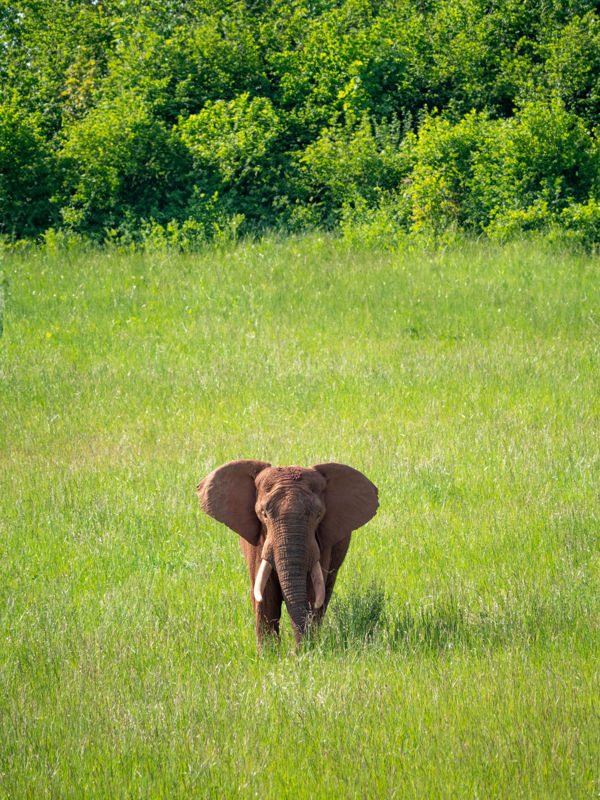We’re having a Hoot! International Owl Awareness Day 2024
2nd Aug 2024
Here at Noah’s Ark, we’re celebrating International Owl Awareness Day. (Although, we do like to celebrate our owls every day!)
Awareness Days are increasingly important as they help educate visitors, and shine a spotlight on incredible animals.
From buzzards to blue tits, Noah's Ark Zoo Farm provides a wonderful home to hundreds of species of native wildlife. 10 years ago an RSPB survey recorded 67 different species of bird on the farm! This spring, staff members surveyed the zoos grounds and recorded the native wildlife they spotted. The birds spotted were:
- Barn Owls
- Blue tits
- Long-tailed tits
- Coal tits
- House sparrow
- Robins
- Chaffinch
- Wrens
- Kestrel
- Sparrowhawk
- Green woodpecker
Native Wildlife
We have a huge conservation area where native wildlife can thrive. This area is located just behind the Big Cat Sanctuary and incorporates our butterfly meadow and our large pond, as well as several acres of fields. This conservation area is currently open to to public as part of our summer public engagement. Check our social media for dates and times of the various public engagement sessions.
Our Owls
At the zoo, we have 5 amazing owls.
- Bella the Barn Owl
- Bobbins the Boobook Owl
- Orion the Tawny Owl
- Bramley the Ural Owl
- Elliot the Burrowing Owl
Our owls are ambassador birds for their species so we can educate the public about how fantastic they are and how their species are doing in the wild.
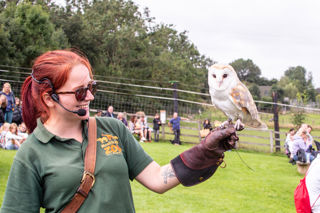
Bella the Barn Owl
Our Barn Owl is called Bella. You can see Bella in the Birds Of Prey flying display.
Bella loves people and is a great bird for our volunteers to learn from when it comes to working with owls.
Barn owls are medium sized birds with large wings and a lightweight body. They have large eyes and a distinct white face. Generally speaking, females have darker plumage (feathers) and males tend to be lighter coloured.
The barn owl is well-adapted for hunting at night. They have a concave collection of feathers on their face (called a facial disk) which funnels sound into their ears, increasing their ability to hear prey. In addition, they have soft feathers which muffle sound so they can fly in total silence.
Did you know…
The owls don’t hoot like other owls. Instead the barn owl makes a hissing or shrieking sound. If you’re very quiet and listen well, you may be able to hear!

Orion the Tawny Owl
You can come and meet Orion, our Tawny Owl. Orion is a beautiful flyer. He also likes to land close to the public too! He’s been spotted landing on benches and even on push chairs in our Birds of Prey display.
Tawny Owls are the most common native owl in the UK and are highly territorial of their home range, which is usually 30-50 acres. These nocturnal birds are often seen before they are heard.
The Tawny Owl is a medium sized bird, with a wing span of 81-105cm (32 - 41in) Its flight includes long glides on rounded wings, with fewer wingbeats, and at a greater height than other Eurasian owls. It will hunt by suddenly dropping from a perch onto its prey, which they usually swallow whole.
Their typical lifespan is 5 years in the wild, with breeding taking place in their second year. Tawny Owls tend to mate for life and lay only one clutch of 2-3 eggs per year, in late winter or early spring. Young tawny owls will often sit near the nest on branches before officially leaving the nest during a ‘branching phase’, and will still be dependent on their parents for food for up to 3 months after leaving the nest. They will nest in a variety of places including old crow and pigeon nests, or squirrel drays, but they prefer cavities in dead trees and hollow tree trunks. Unlike barn owls, it is rare to find them roosting or nesting in buildings.
Did you know…
They are the only owl in the world to make the ‘twit twoo’ sound! The female ‘twits’ and the male responds with the ‘twoo’ sound.
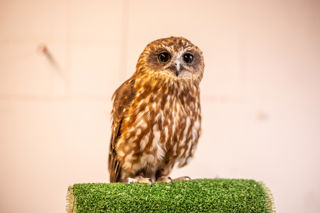
Bobbins The Boobook Owl
Here at Noah’s Ark, our Boobook owl is called Bobbins. Bobbins is the naughtiest owl. He likes to land of keepers heads and hang around their feet as they clean.
The Australian Bookbook is the smallest and most common owl in Australia. The Boobook owl is also known as the 'mopoke' owl. Both names are due to it'd distinctive "boo-book" or "mo-poke" call. The Boobook was described by John Latham in 1801 and was generally considered to be the same species as the morepork of New Zealand until 1999.
When threatened, they will sit bolt upright with their feathers pressed tightly against their body and turn side on to the source of threat, hereby appearing long and slender.
Did you know…
When a Boobook Owl chirps, they sound like crickets!
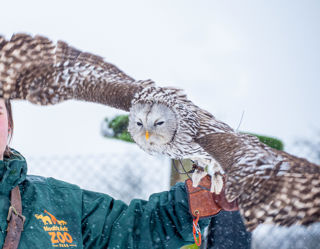
Bramley the Ural Owl
Our Ural Owl is called Bramley! Bramley has another name too, the Birds and Reptiles team call him their ‘ooh ahh’ bird, this is because when he flys during the Birds of Prey display, the crowd make that noise. The Ural owl is a nocturnal owl, with an unusually long, wedge-shaped tail. Their flight style has deep relaxed wing beats, giving the appearance of quite a large bird.
Their name refers to the Ural Mountains of Russia where they are commonly found. They prefer to live in taiga forest (snow forest) biomes, near a clearing. They are well adapted to elevations from sea level to mountainous regions. They are highly territorial and rarely stray from their home range, even when the prey population decreases.
Did you know…
Ural owls have remarkable binocular vision that can see prey from long distances even in low-lighting conditions.
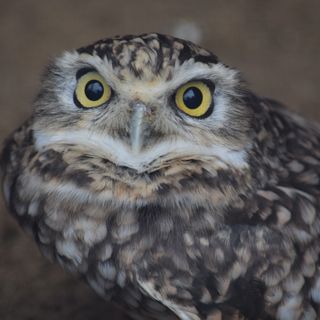
Elliot the Burrowing Owl
Elliot is our Burrowing Owl here at the zoo. Elliot is quite a shy owl. He likes to sit up high in his aviary spying on public while visitors try and spot him in his aviary.
Burrowing Owls are small, sandy colored owls with bright-yellow eyes. They live underground in burrows they’ve dug themselves or taken over from a prairie dog, ground squirrel, or tortoise. They live in grasslands, deserts, and other open habitats, where they hunt mainly insects and rodents. Their numbers have declined sharply with human alteration of their habitat and the decline of prairie dogs and ground squirrels.
Did you know...
Burrowing Owls cannot actually did their own holes. They rely on small mammals to do that for them!
You can come to visit our amazing owls at the Zoo, and watch them fly in our daily Birds of Prey flying display. Find out more about our other daily talks here.

Sign Up to the newsletter
Would you like to receive marketing emails from us? Please tick the box if you would like to receive information about future events, ways you can support our charity, offers and discounts.

